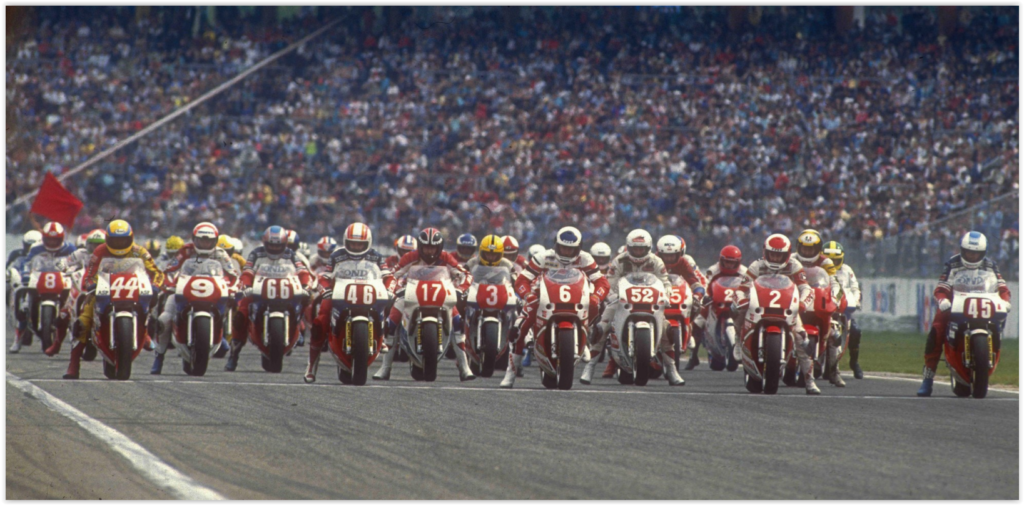
The 1st half of 1989 – the 2nd year of the Superbike World Championship
Last year the American Fred Merkel snatched the title from the Italian Davide Tardozzi (Bimota) in the very last race of the season in Manfeild (New Zealand). As in the previous year, the first year of the Superbike World Championship, the 1989 season began again in Donington. This time even at the end of March and luckily it was sunny. The mode had been significantly improved compared to 1988. Now the drivers got the full number of points for each run from then 20 for the winner, 17 for the runner-up and 15 for the 3rd place. After that the rules were like today. It was not until 1995, however, that the winner was given 25 points, P2 their 20 points and third place 16 points. At the end of the second Superbike World Championship season, no fewer than 99 drivers should be listed in the World Championship ranking. That number has never been reached since.

The 1989 calendar
Compared to the first year, there were two more rounds and a total of 4 new venues after Estoril in Portugal was no longer on the calendar and should not come back until 1993. In France, they switched from Le Mans to Le Castellet on the Circuit Paul Ricard in southern France. With two more overseas races it didn’t get any easier for the European teams to want to contest the whole season. After all, the very early start in Donington didn’t go smoothly at the end of March, but the highly dangerous route from Mosport in Canada was to lead to discussions later. Why Enna-Pergusa was chosen in Italy was at those time just as astonishing as it is today. The racetrack around the only natural lake in Sicily was very far away for all Europeans. Instead, there would have been at least four alternatives in northern Italy to choose from: Misano, Mugello, Monza and Imola. Maybe the FIM officials just wanted to travel as far as possible at company expense, you will never find out.

The 1989 season started in Donington – a tailor-made start
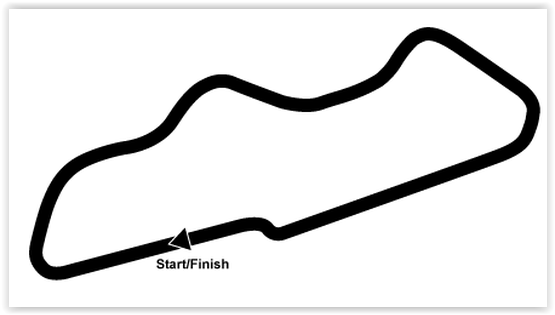
On the last weekend in March, things got down to business again in Donington Park in glorious spring weather. Compared to later, the route was even shorter back then; today’s loop with the Melbourne hairpin was missing. But that didn’t detract from the tension or mood in 1989. In the first race, Vice World Champion Fabrizio Pirovano (Yamaha) won ahead of the two local heroes Roger Burnett (Honda) and Terry Rymer (Yamaha). World champion Fred Merkel on a Honda was fourth and a certain Carl Fogarty took seventh place on the same make. The Englishman from Blackburn, north of Manchester, was only 23 years old at the time and a few years later would cause a sensation in the WorldSBK.

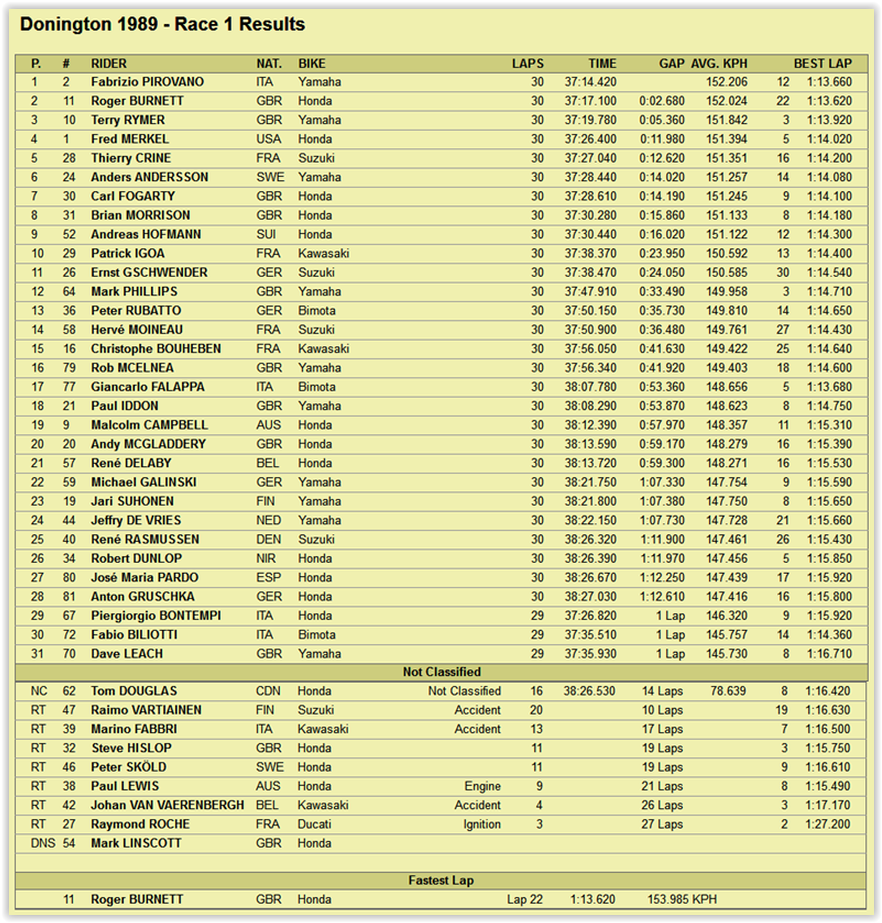
The French Raymond Roche retired with ignition problems and with Ernst Gschwender and Peter Rubatto two Germans made it into the points in the first race. The Swiss Andreas Hofmann achieved a strong performance with only 2 places behind Fogarty in 9th place.
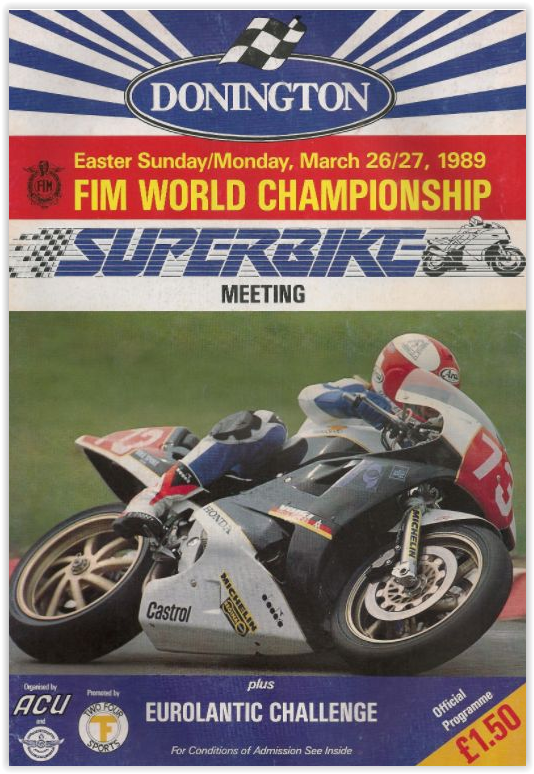
The second race at Donington – a new face on the podium
With Giancarlo Falappa, a new face from Italy was on top of the podium after the second race. The “Lion of Jesi”, as it was soon called based on its place of birth, had already taken pole position the day before. He had mixed up the Italian sports production championship in the previous year and then decided to participate in the near-series world championship. According to reports, he had not even contested 10 road races in the national championship before his first victory in the Superbike World Championship. Rymer and Burnett completed the podium again after Run 2, this time in reverse order. Merkel came in 6th behind Steve Hislop from England and the Swede Anders Anderson this time, right in front of the two Germans Gschwender and Rubatto. Local hero Fogarty was thirteenth in the second race.
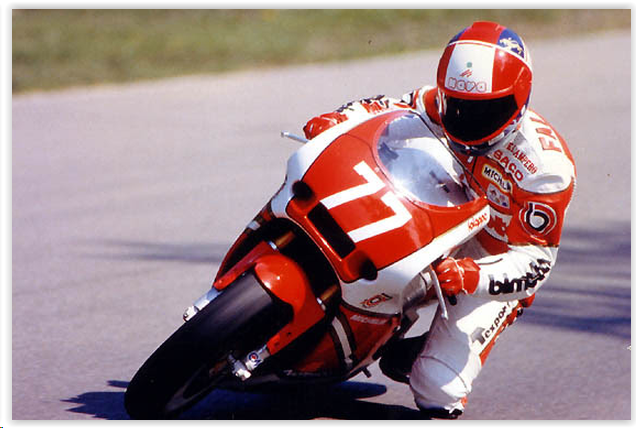
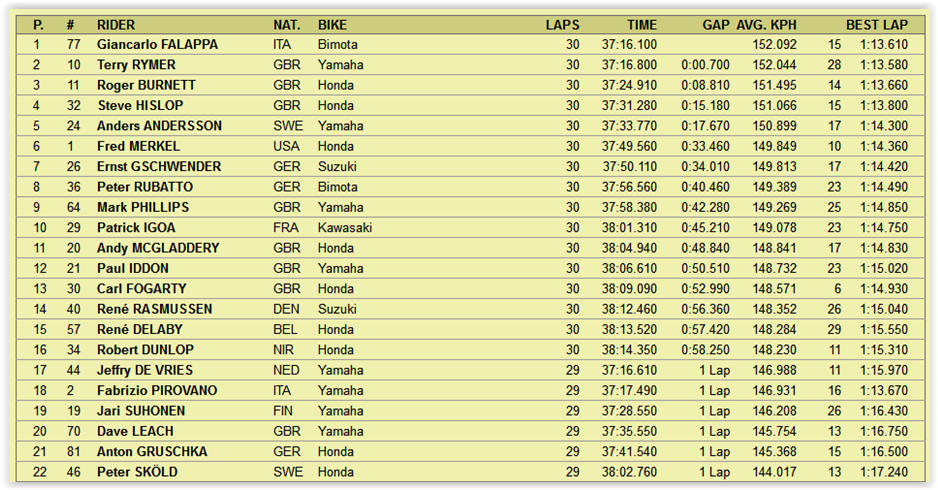
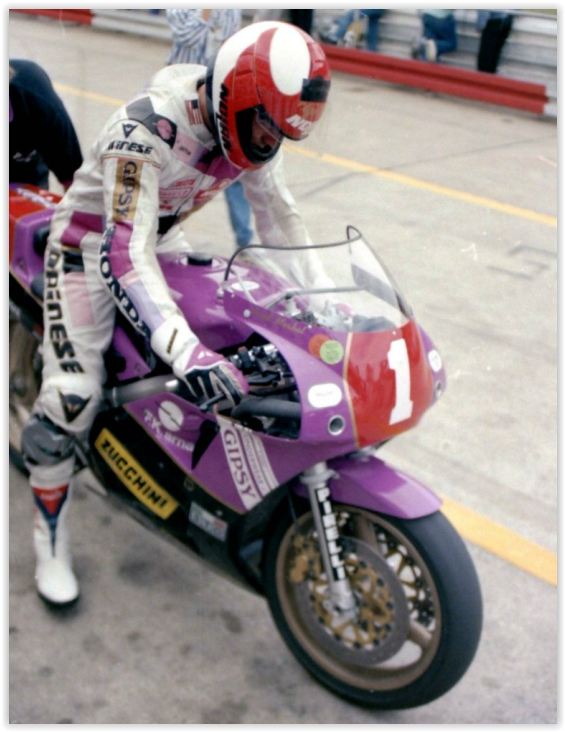

The second round of the World Championship on the Hungaroring
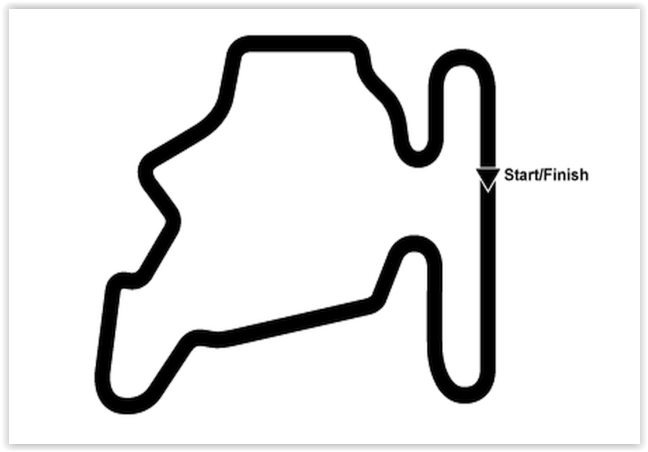
The reigning world champion struck back in Hungary. Fred Merkel won both races on the Hungaroring with his Honda VFR 750 RC 30. While his lead over his closest rival Raymond Roche (Ducati) was a good 6 seconds in the first race, it was more than 12 seconds that Fabrizio Pirovano (Yamaha) lost to him in the second. Davide Tardozzi, on the other hand, who had led the World Cup up until the last round of the World Cup last year, experienced a pitch-black weekend behind the iron curtain. 20th place on his Bimota in race 1 and a fall in race 2 were a tick-off result for the Italian. Only in the third round of the World Championship should the future Ducati WorldSBK team boss gain his first points of the season.
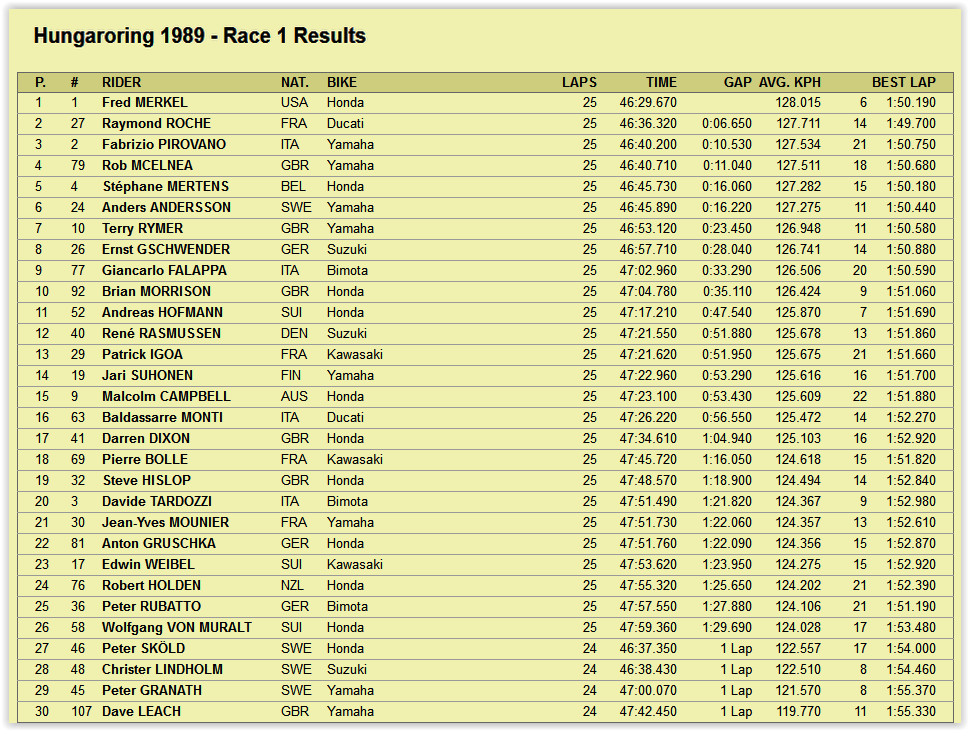

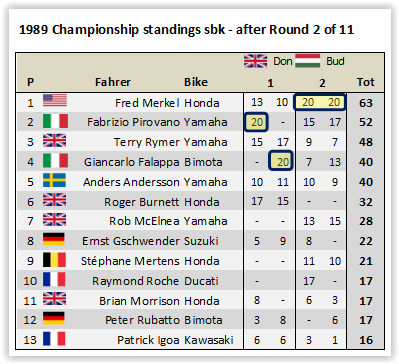
The new North America Rounds 3 and 4
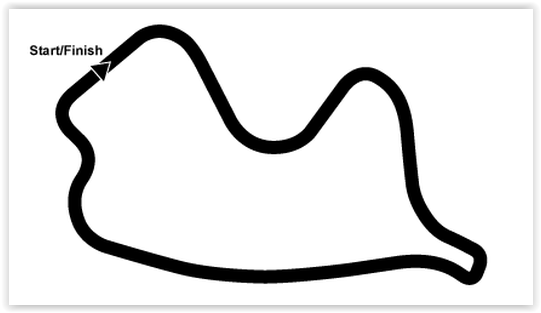
First the third round of the World Cup went to Mosport in Canada, a controversial and very dangerous route. Fred Merkel won his third race in a row in the first run and took third place behind Giancarlo Falappa and local hero Ruben McMuerter (Honda) in the second race. Of course, many drivers of the first two laps in Mosport were no longer at the start because the travel expenses across the Atlantic were too high at the time for them. But at least 16 Europeans had undertaken the long journey to Canada. Nine of them took World Championship points in the first race and ten in the second.

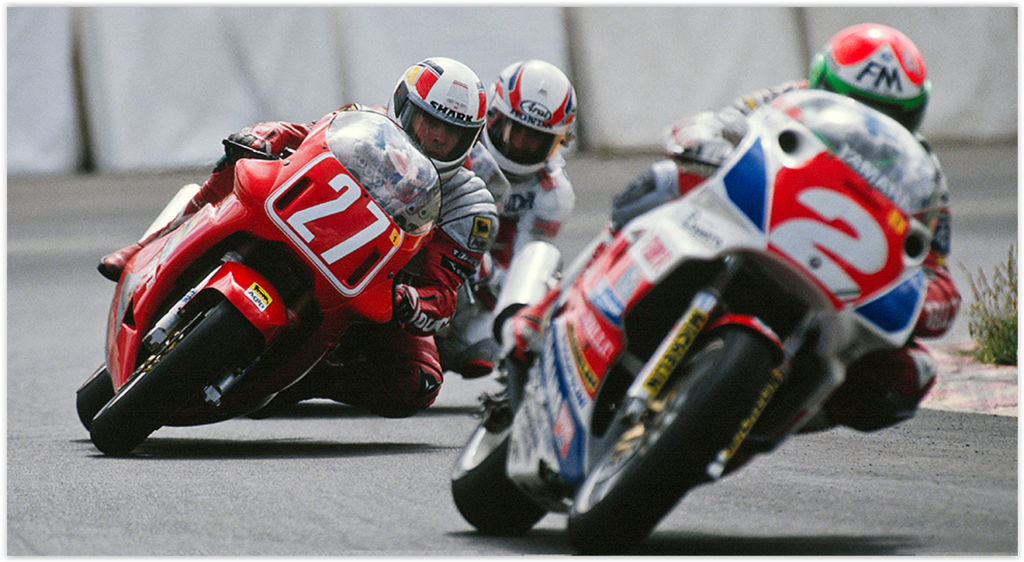
Die Strecke von Brainerd
Die zweite Strecke in Nordamerika lag in den Vereinigten Staaten, der Heimat des amtierenden Weltmeisters Merkel. Im Juli 1968 als Donnybrooke Speedway eröffnet, sollte der im Bundesstaat Minnesota für drei Jahre in Folge Austragungsort der Superbike WM bleiben. In erster Linie wurden dort jedoch Autorennen gefahren und einige der in den USA sehr populären Drag Strip Wettbewerbe ausgetragen.
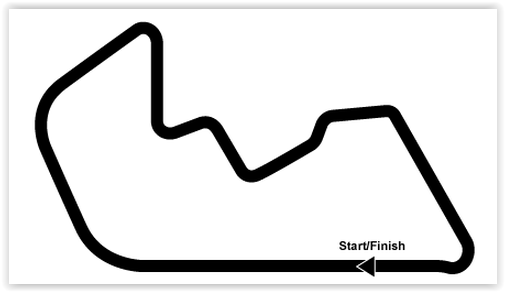
A home race for the 3-time AMA champion
Since the AMA was also a frequent guest here, it was a home race in two ways for the World Championship leader. Fred Merkel won the races on September 2, 1984, the year of his first national title, and again the following year on August 31. His successor as champion of the American Superbike series was, incidentally, in 1987 Wayne Rainey, the three-time 500 cc world champion from 1990 to 1992. He was also the winner of the championship run in 1986, ahead of Fred Merkel on P2.
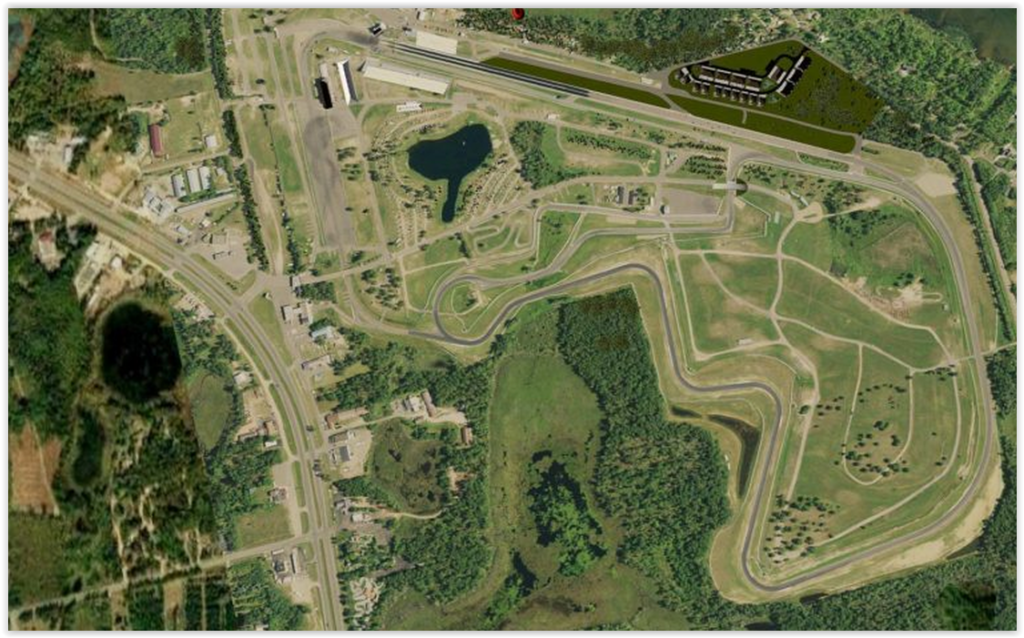
The 1989 World Championship races in Brainerd
Fred Merkel as a two-time AMA winner on this track saw the two races as a kind of compulsory exercise on one of his home tracks, but it turned out differently than expected. In the first run, the US boy had to be content with fourth place behind Raymond Roche (Ducati), Fabrizio Pirovano (Yamaha) and fellow Honda brand colleague Stéphane Mertens. In the second race, the local hero was at 3rd place behind double winner Roche and Belgian Stéphane Mertens. The US-American was still in the lead in the World Cup interim ranking before continuing to Styria for the Österreich-Ring.
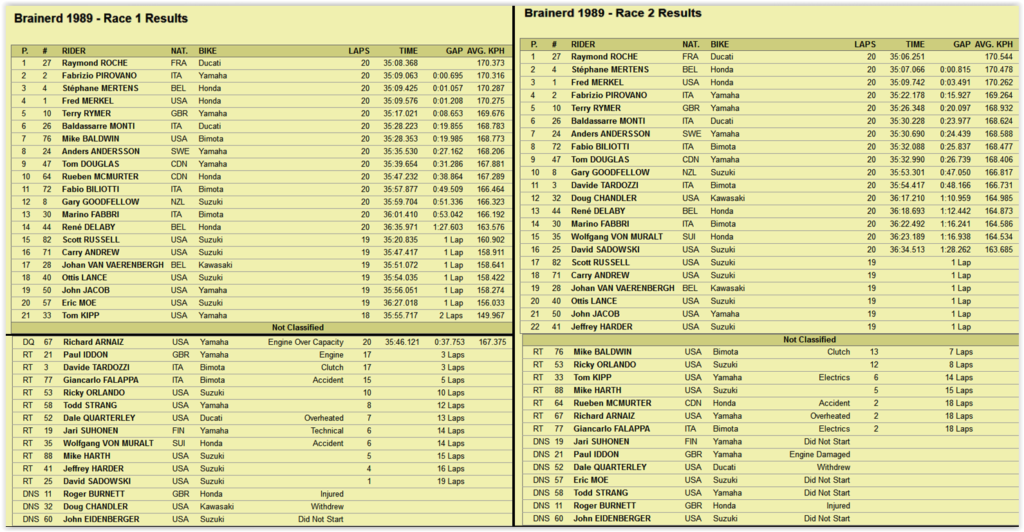

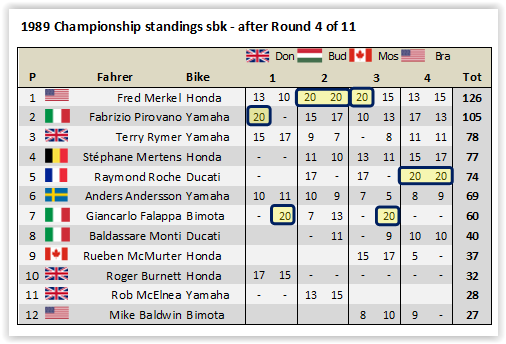
World Championship round 5 in Spielfeld (Austria)

Today the racetrack is called the Red Bull Ring, on which Fred Merkel and his group competed in the fifth round of the 1989 Superbike World Championship. The fact that this route is not at all popular with many riders and teams in MotoGP cannot be blamed on the soda beverage and media group alone. Designed as a high-speed course, the original layout wasn’t all that bad compared to today. From today’s perspective, the conversion to the so-called A1-Ring was a disaster and, unfortunately, Red Bull adopted this layout practically unchanged in 2011 during the third refurbishment after the disfigurement of the route in 1997. If you saw the first of two MotoGP races of the 2020 season on this track, you don’t need any further explanation.

Run 1 at today’s Red Bull Ring – back in Europe
On July 2, 1989, the 5th World Cup round continued in Spielberg. The then Österreich-Ring was on the calendar of the still young series-based World Cup for the second time. The winner of the first race was the Portuguese Honda rider Alex Vieira. He won ahead of Roche, Mertens and the Italian Massimo Broccoli on the second best Ducati. Despite just over 7 seconds behind the winner, Fred Merkel was only eleventh. The list of classified drivers in the first run was very long at 41, plus 9 pilots who did not see the checkered flag and the Hungarian Arpád Harmati (Honda) did not start. Baldassare Monti drove the fastest lap with 1: 55.190 and an average speed of 182.922 km / h, which was also impressive at the time. The Italian crossed the finish line in sixth place in the first race and was the third-best Ducati driver behind Roche (P2) and Broccoli with P4.
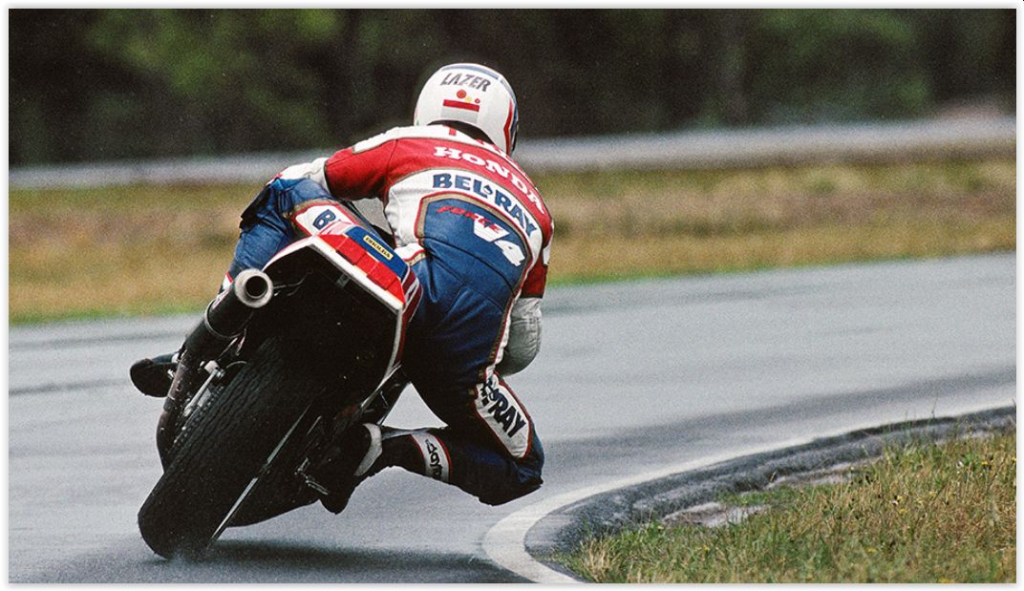
Huge starting field and interesting names
Incidentally, a certain Peter Krummenacher from Switzerland with rank 41, matching his starting number 41, was the last of the drivers rated at the time. He baptized his son after the name of the US Grand Prix driver Randy Mamola. Exactly 30 years later, his offspring fought for the world title for the first time in his life, albeit one class lower. In the distant Losail in the desert state of Doha, Randy succeeded in the end. He was content to finish in 5th place behind his team-mate and arch-rival Federico Caricasulo. In the end, the Swiss won the World Cup with a 6 point lead. Unfortunately, he disappeared the following year instead of defending his title and Randy was missing for the rest of the season after the 2020 Corona break.
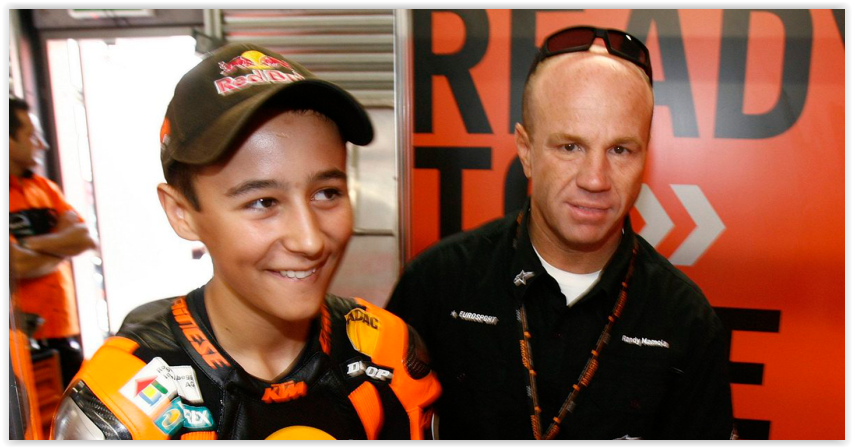
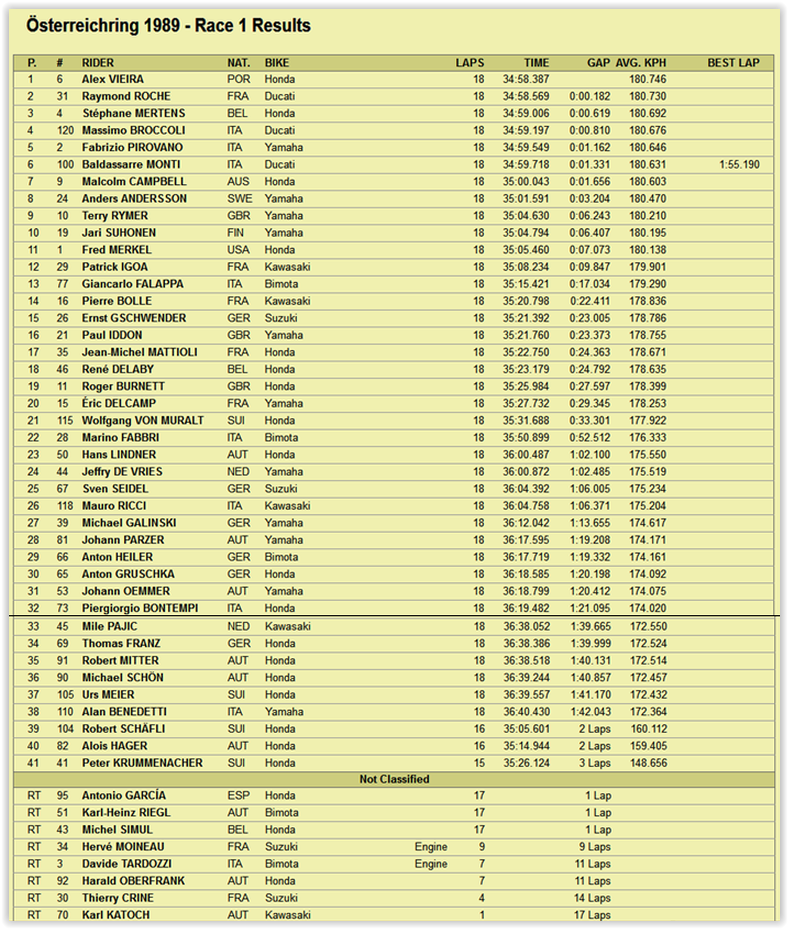
The second run in Styria
With 3rd place behind Mertens and Pirovano, Fred Merkel was able to defend his world championship lead in the intermediate ranking. The German Suzuki driver Ernst Gschwender took a respectable eleventh place in this race after P15 in the first race. The overall winner was the Belgian Honda driver Stéphane Mertens with a second place and a victory in Styria. In the second run only 29 drivers saw the checkered flag. Fourteen pilots were canceled, including Peter Krummenacher. A total of 6 drivers had not even started the 2nd race at that time. The only two classified Austrians were with P26 Johann Parzer (Yamaha) and with P28 Honda driver Michael Schön. They crossed the finish line one lap behind the winner Mertens.
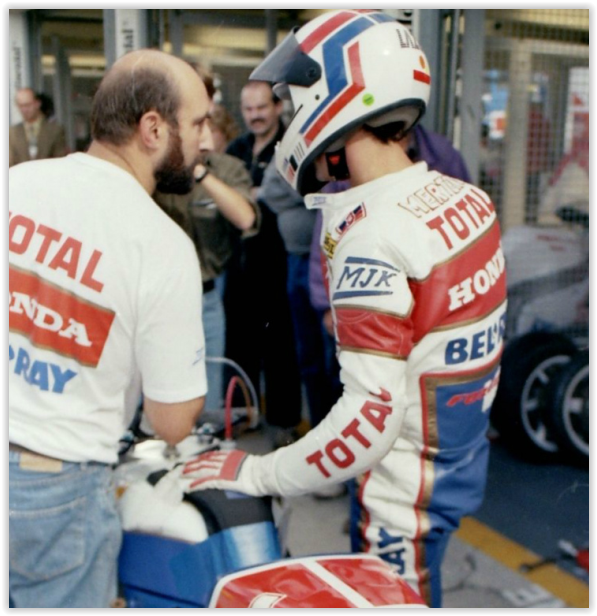
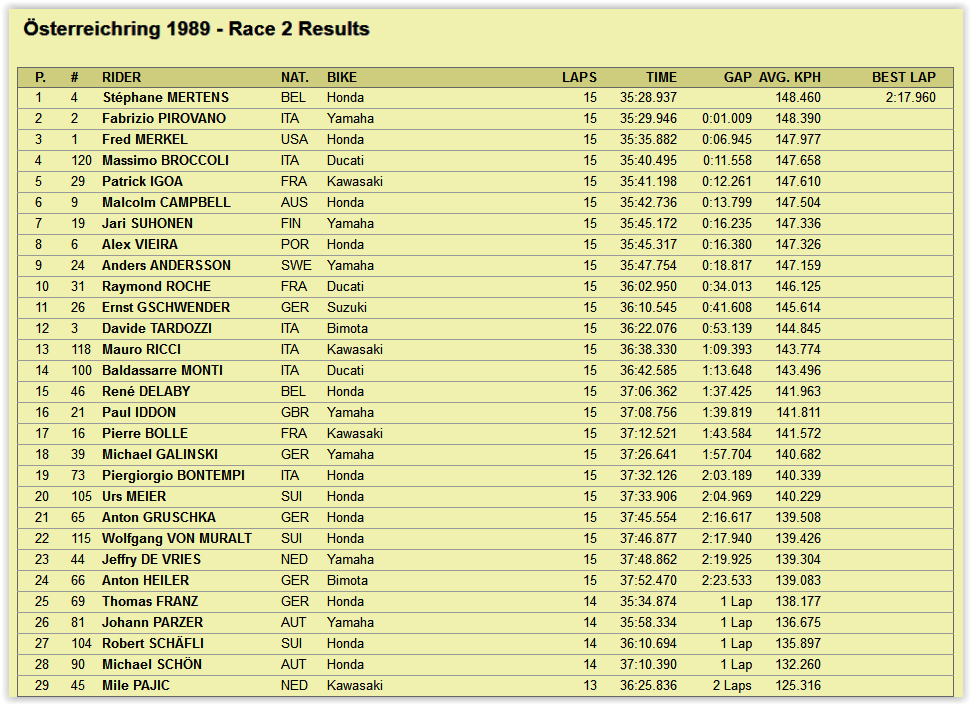
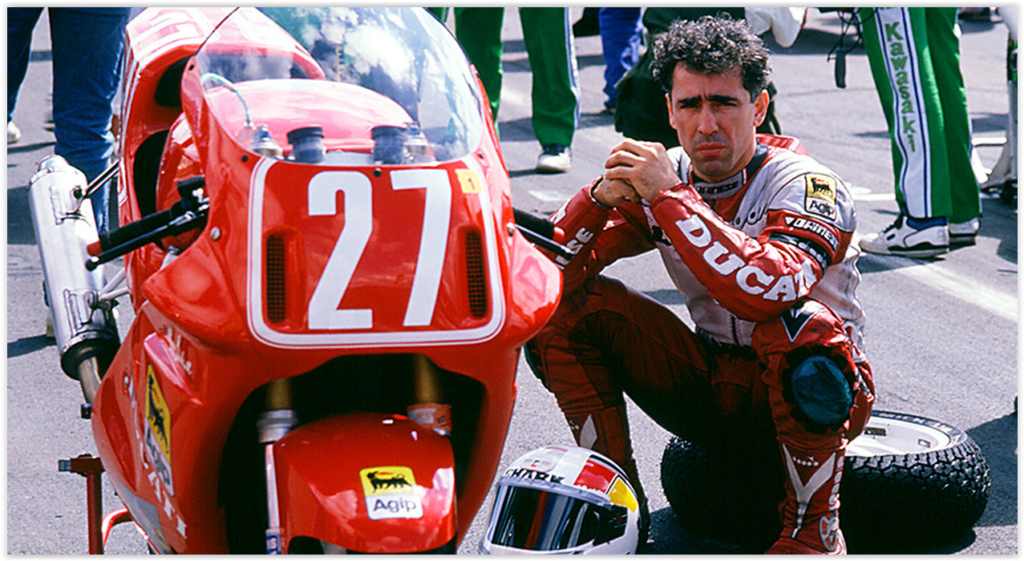
The sixth of 11 World Championship rounds in the south of France
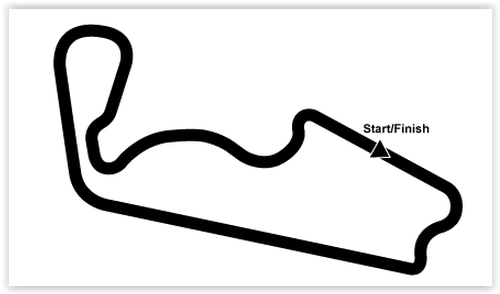
Fred Merkel traveled to Le Castellet as the World Cup leader. The reigning world champion has been in the lead since the start of the season from the first round in Donington. For him, like many other drivers, the Circuit Paul Ricard was a new track. So it was no surprise that the Honda rider had a tough time here. Stéphane Mertens won the first round of the 6th of 11 rounds of the Superbike World Championship. The brand colleague of the world championship leader had already won the second run at the Österreich Ring and was in excellent shape. Second place went to American Mike Baldwin on a Bimota, ahead of local hero Raymond Roche on the fastest Ducati. It was to be the last podium in the career of the wildcard pilot from the USA, who only competed in 5 rounds of the World Championship. His compatriot Merkel had to be content with 8th place. In the second race it was at least 4th place behind Giancarlo Falappa (Bimota), Roche and Mertens.
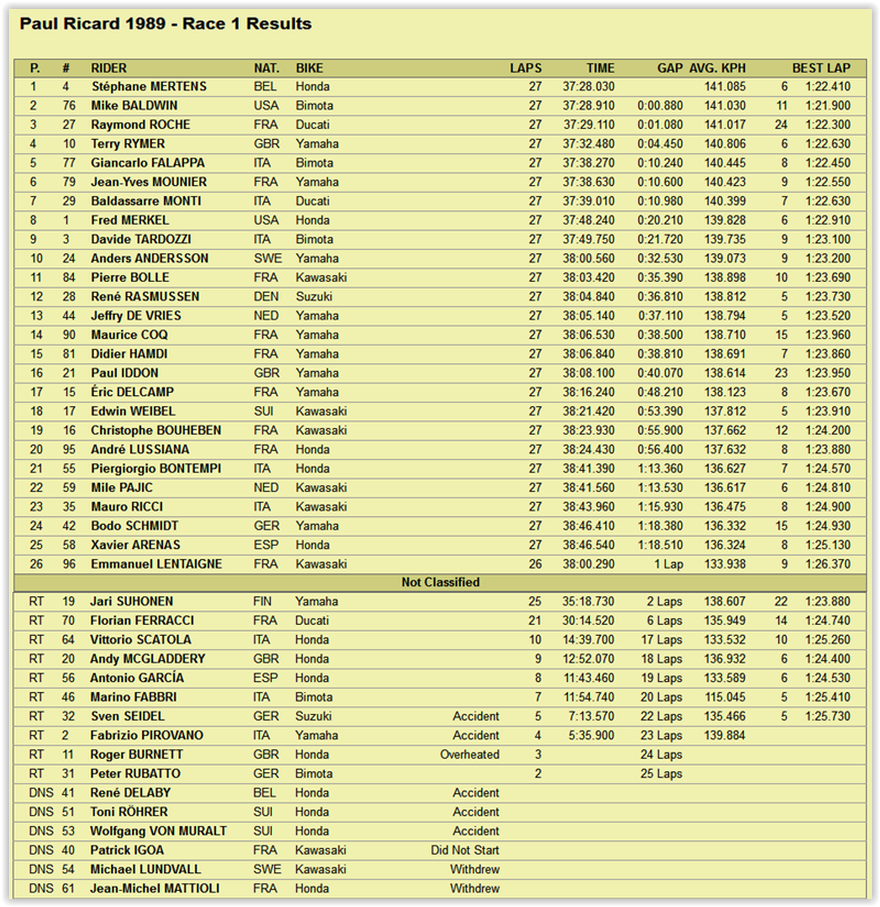
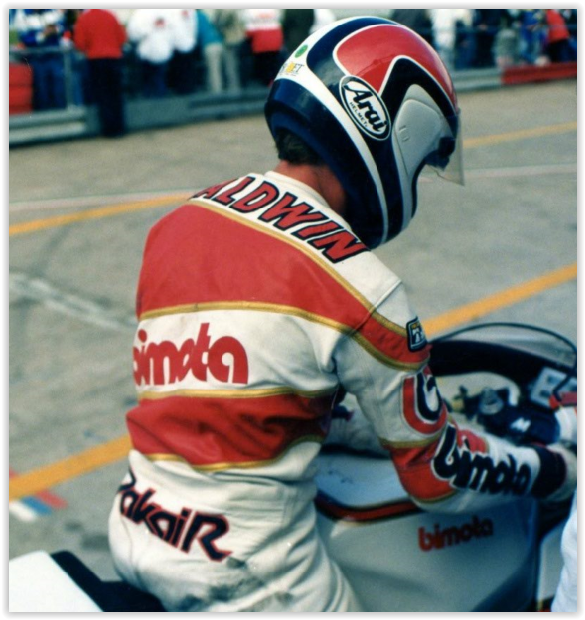
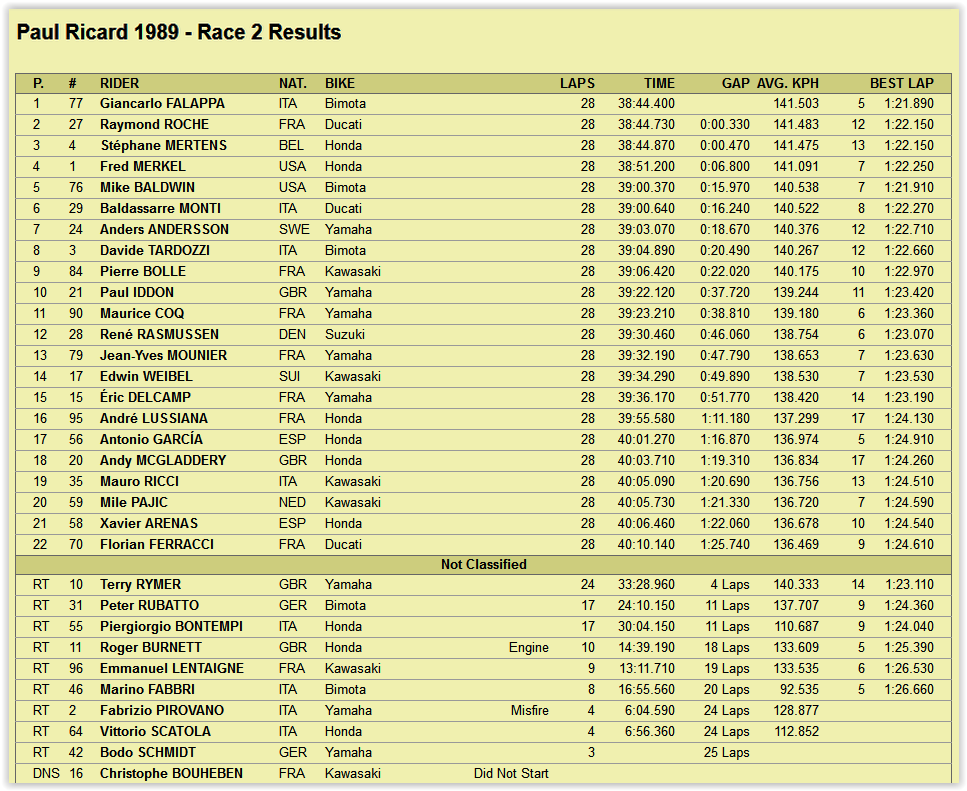
The situation in the world championship after half-time of the season
After 6 of 11 laps, 4 drivers had established themselves as favorites for the title. In addition to the reigning world champion Merkel, they included Stéphane Mertens from Belgium, Raymond Roche and Fabrizio Pirovano. The latter had become vice world champion last year with the same number of points as Davide Tardozzi. Mertens scored just one point less in 1988, when he was still a Bimota works driver. Despite 3 wins this season, Giancarlo Falappa, the new hope for Bimota, was clearly behind due to his lack of consistency and only on World Championship rank 7. It looked even worse for his compatriot and team-mate Tardozzi.
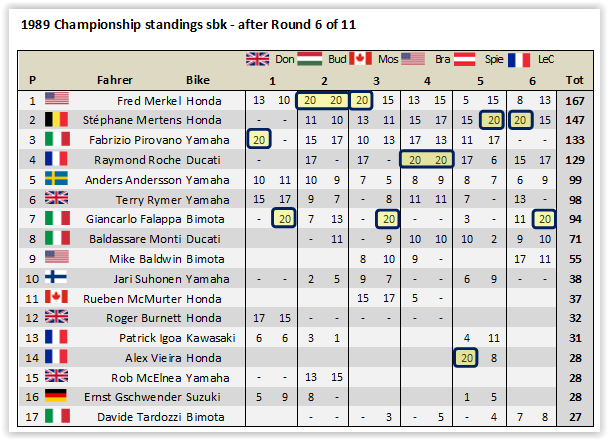
2nd half of the year 1989: http://www.motoracers.eu/wsbk-history-part-4/?lang=en
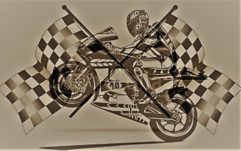
No Comments Yet